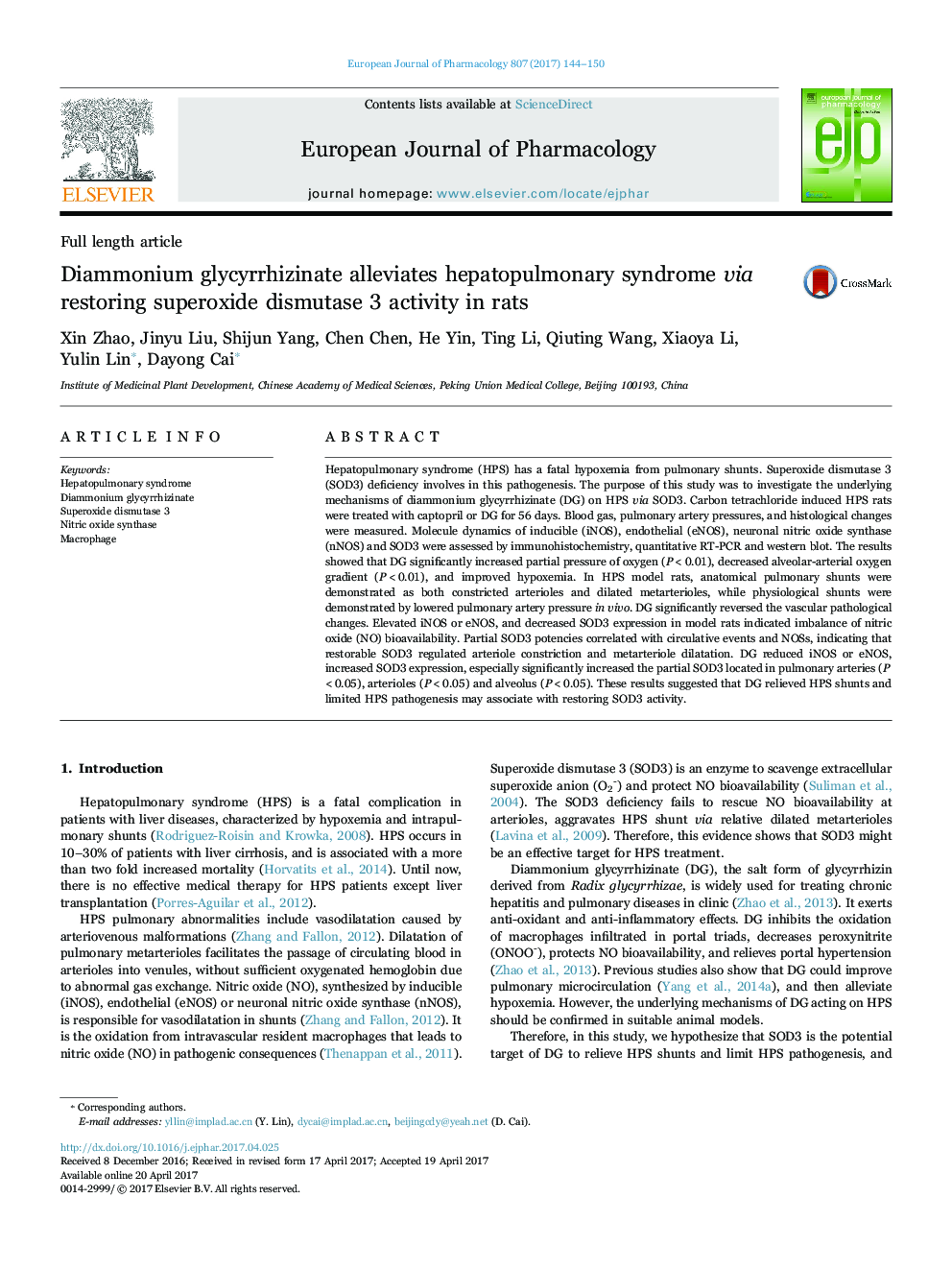| Article ID | Journal | Published Year | Pages | File Type |
|---|---|---|---|---|
| 5554577 | European Journal of Pharmacology | 2017 | 7 Pages |
Hepatopulmonary syndrome (HPS) has a fatal hypoxemia from pulmonary shunts. Superoxide dismutase 3 (SOD3) deficiency involves in this pathogenesis. The purpose of this study was to investigate the underlying mechanisms of diammonium glycyrrhizinate (DG) on HPS via SOD3. Carbon tetrachloride induced HPS rats were treated with captopril or DG for 56 days. Blood gas, pulmonary artery pressures, and histological changes were measured. Molecule dynamics of inducible (iNOS), endothelial (eNOS), neuronal nitric oxide synthase (nNOS) and SOD3 were assessed by immunohistochemistry, quantitative RT-PCR and western blot. The results showed that DG significantly increased partial pressure of oxygen (P<0.01), decreased alveolar-arterial oxygen gradient (P<0.01), and improved hypoxemia. In HPS model rats, anatomical pulmonary shunts were demonstrated as both constricted arterioles and dilated metarterioles, while physiological shunts were demonstrated by lowered pulmonary artery pressure in vivo. DG significantly reversed the vascular pathological changes. Elevated iNOS or eNOS, and decreased SOD3 expression in model rats indicated imbalance of nitric oxide (NO) bioavailability. Partial SOD3 potencies correlated with circulative events and NOSs, indicating that restorable SOD3 regulated arteriole constriction and metarteriole dilatation. DG reduced iNOS or eNOS, increased SOD3 expression, especially significantly increased the partial SOD3 located in pulmonary arteries (P<0.05), arterioles (P<0.05) and alveolus (P<0.05). These results suggested that DG relieved HPS shunts and limited HPS pathogenesis may associate with restoring SOD3 activity.
Graphical abstractDownload high-res image (190KB)Download full-size image
